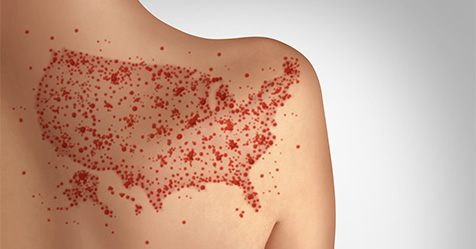Wildlife can be a major nuisance to facilities, causing damage and contamination. Whether carrying disease, stealing food, or causing structural damage, animals in your building are never a good sight unless you work at a zoo or pet shop.
The first step in preventing pests from entering and reentering your facility is knowing which types of animals are most likely to seek access.
Watch for rodents and winged pests
Pests enter buildings seeking food, shelter, and a space to create nests. The main factor they consider when choosing a facility is ease of accessibility.
Rats, pigeons, and bats are among the most common pests you will encounter as a facility manager. Rats are especially challenging because they don’t need significant entry points to gain access to a building; they can squeeze through holes as small as 20mm.
Pigeons use a variety of habitats but are most commonly found in and around urban areas or structures. Pay attention to any pigeons you see around your facility and implement preventative measures to keep them out of your buildings sooner rather than later. The longer the birds stay in the area, the more likely they are to create a flock.
Facilities with a lot of dark, infrequently used spaces are most likely to attract bats. If your building fits this description, regularly inspect it for evidence of bats roosting. Common signs of bats include frequent scratching or squeaking noises, or bats circling the outside of the building. A dead giveaway is seeing piles of guano (bat excrement) in your building, since the animals defecate under the area they are roosting.
The signs of animal infestation are similar among species. Chances are good that you have a pest problem if you see animal droppings (inside or outside the building), gnawed objects, or scuff marks on walls or the ceiling. Squeaking or shuffling sounds inside the walls are another sign that you may have unwanted visitors.
Adjust lighting and temperature
Protecting your facility against pests before they enter will save you time, money, and hassle in the long run. In addition, preventative measures are often less intrusive and harmful to the environment than standard pest control methods.
Exterior lighting can help discourage pigeons and bats from accumulating outside your building and circling around it finding ways to sneak inside. Adequate light also ensures there are no dark areas when pests can nest undetected.
When installing exterior lighting, include pigeon-specific detractors like exclusion netting and bird wiring. Otherwise, the birds may nest directly on the lighting.
Set your building’s interior temperature taking care that it is warm enough to keep its human inhabitants comfortable, but not so warm that pests seek it out as a nesting location, especially in the winter months. Maintain a lower average temperature in less-trafficked areas of the building, where pests are most likely to be situated.
Consider food sources
After analyzing your facility’s lighting and temperature, look into possible food sources. Even if your building doesn’t contain a restaurant or cafeteria, it may offer an array of food options that interest pests.
Common food sources include accumulations of garbage, scattered food particles, dirty dishes, or spills. Make sure custodial staff are eliminating these sources by following cleaning schedules and securing garbage can lids. Get building inhabitants involved by cleaning up after themselves following meals and snacks.
Seal up hidden entranceways
Pests aren’t entering your facility through the front door. Regularly inspect your building for less obvious entry points such as holes, and seal them up whenever possible.
Look for gaps or cracks in the interior and exterior of the building—small holes that rats could have gnawed in your walls or bats may have squeezed through. Doing a complete building scan for gaps and cracks every couple of weeks is one of the best preventative measures against pets.
Eliminate clutter
Maintaining vigorous cleaning and maintenance practices in your facility is vital for overall pest management. Rats love cluttered areas where they can hide, so throw out garbage and keep any loose items in boxes that are stored off the ground, away from corners.
Following a regular decluttering and cleaning protocol—when combined with maintaining your facility’s exterior, storage areas, entryways, and other potential entry points—is crucial in preventing animal infestations. If you require extensive services, working with wildlife pest specialists will help you avoid or handle pest problems in the future.




